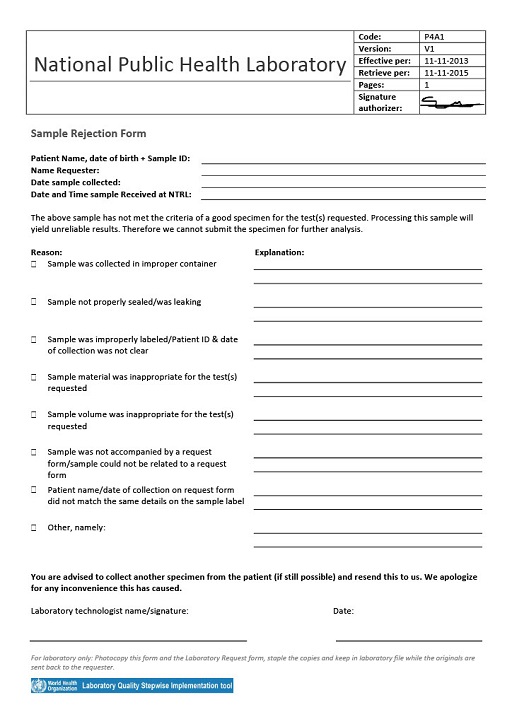5.1 Specimen handling and storage
The accuracy, reliability and timely reporting of test results depend on having good quality samples as a starting point. Laboratories should therefore take proactive steps to ensure that samples received for testing meet their requirements and reject those samples that do not (Figure 7).
Activity 9: Test request form
List the information you would expect to see on a test request form accompanying a sample sent to your workplace.
Discussion
You may wish to compare the two example lists below with the test request form used in your workplace.
Public health
- Patient ID and basic information such as sex, date of birth
- Test requested
- Date and time of sample collection
- Date and time of sample receipt
- Type of sample
- Any clinically relevant information
- Name and signature of the person who authorised the request
- Contact details of person requesting the test
Animal health
- Contact details of owner of animal and/or premises
- Contact details of person requesting the test
- Patient ID and basic information such as gender, age, animal species and breed, type of farm
- Test requested
- Suspected pathogen and tests requested
- Date and time of sample collection
- Date and time of sample receipt
- Type of sample
- Any relevant case history, clinically relevant information
- Any relevant epidemiological information such as spread of infection to other animals, observations about husbandry practices
5 Examples of quality assurance for core processes




